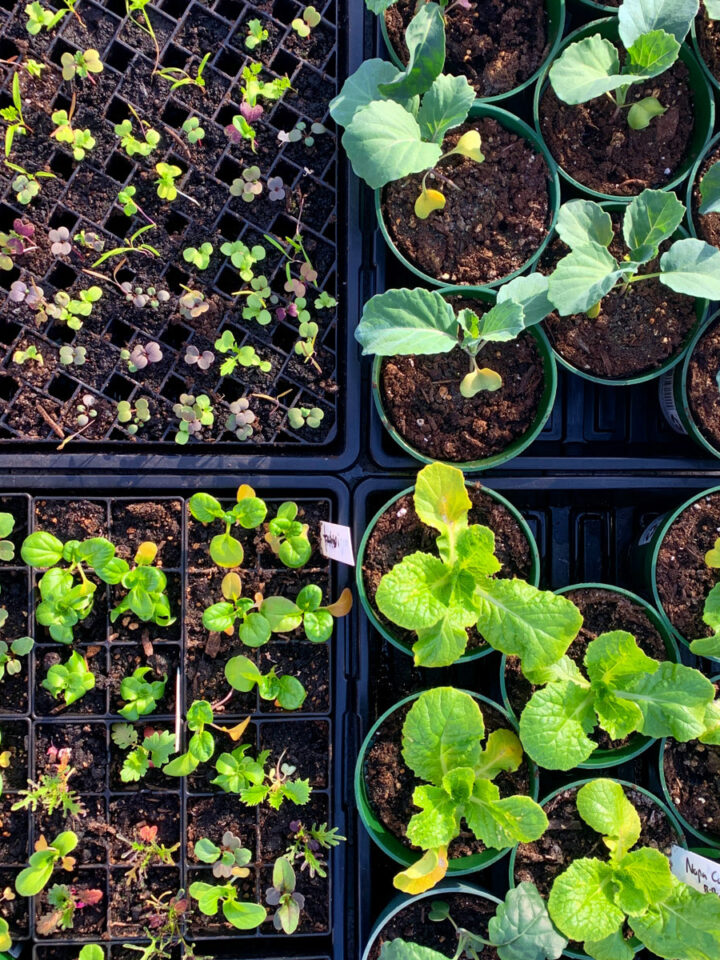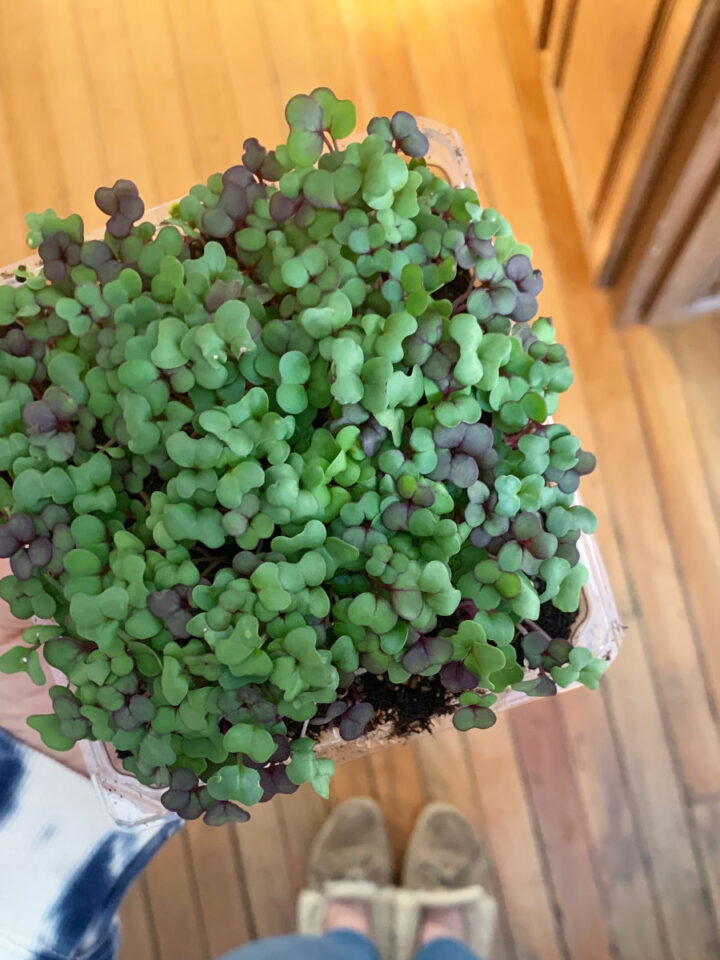
When it comes to gardening, I always think of it in terms of what I would do in a perfect world versus what I can do in my current scenario. In my perfect world, we have acres and acres of land, fertile soil, space for endless rows of crops, some sort of permaculture setup, chickens, goats, the whole shebang. My current scenario is far different, but I love it and am so grateful for it. We garden on a 20’x20’ driveway/patio/concrete slab and, to quote Tim Gunn from Project Runway, are making it work.

I searched high and low for information about how to build raised garden beds on concrete, and found some conflicting information. Some folks said that you can build the beds directly on the concrete and not worry about installing bottoms, but since we rent, I didn’t want to risk staining the driveway. Additionally, there was some concern that the concrete could eventually alter the pH of the soil down the road. Concrete also gets rather toasty in the summer, which means the roots of the plants don’t get the naturally cool soil that they would if they were planted in the ground.
We’ve slowly managed to turn a barren, empty, wasted space into a lush, thriving little oasis using some of the tips below. If you’ve got some empty driveway space, or just a concrete patio like us, hopefully some of this will be helpful! I had a difficult time finding answers, so I want to share what’s been working for us.

MATERIALS
We built our beds using untreated common board that we got from Home Depot, although cedar would be my primary choice if we were building these in a home that we owned. Cedar is naturally rot resistant and will last a very long time, while common boards are easier on the budget if you’re just getting started and unsure if you want to really invest in this gardening endeavor.
For the base, we used untreated plywood with 5 drainage holes for every square foot of space. We get some drainage from the edges where the plywood and the boards are attached, but we wanted to avoid having the soil get water logged. The first year we build a raised bed, we had the entire bed raised off the ground on 4”x4” short legs, but have since dropped the beds so the plywood just sits flush with the ground, and we have experiences no drainage issues since doing this.
THINGS TO NOTE
Because raised beds on concrete don’t get the benefit of cool soil, this means they heat up and dry out faster than in-ground beds. I think we may have under-watered last summer, and some of the plants got scorched in 100 degree days. This year, we installed some hoop houses to provide midday shade and help prevent the soil from drying out as much.
We made a go of square foot gardening and tried to only grow in 6” deep beds last year. Please learn from our mistake and do not try that. 6” deep beds can work if you’re growing on top of native soil, but for us concrete gardeners, we need more space. Some shallow-rooted veggies only need 5 or 6 inches of soil, but lots of other vegetables enjoy more space and can send roots down 36” or more! Currently, ours beds are just shy of 24” and that was plenty for our fall and winter season.
And don’t feel constrained to just raised beds! They can be pricey to install, so there are lots of other options. You can do container growing in anything you can think to use. We have a couple wine barrels and some fabric grow bags, and at one point I considered getting a metal farm trough to grow things in. We’re sort of at capacity space-wise right now, but if raised beds aren’t in the budget, get creative. Pinterest has lots of good ideas!
If you have any questions about how to build raised garden beds on concrete, leave a comment or hit me up on Instagram! Don’t get discouraged if you want to garden but are lacking in the available soil department...make do with what you have. Get creative, and see what sort of empty or underutilized space you have!





Leave a Reply